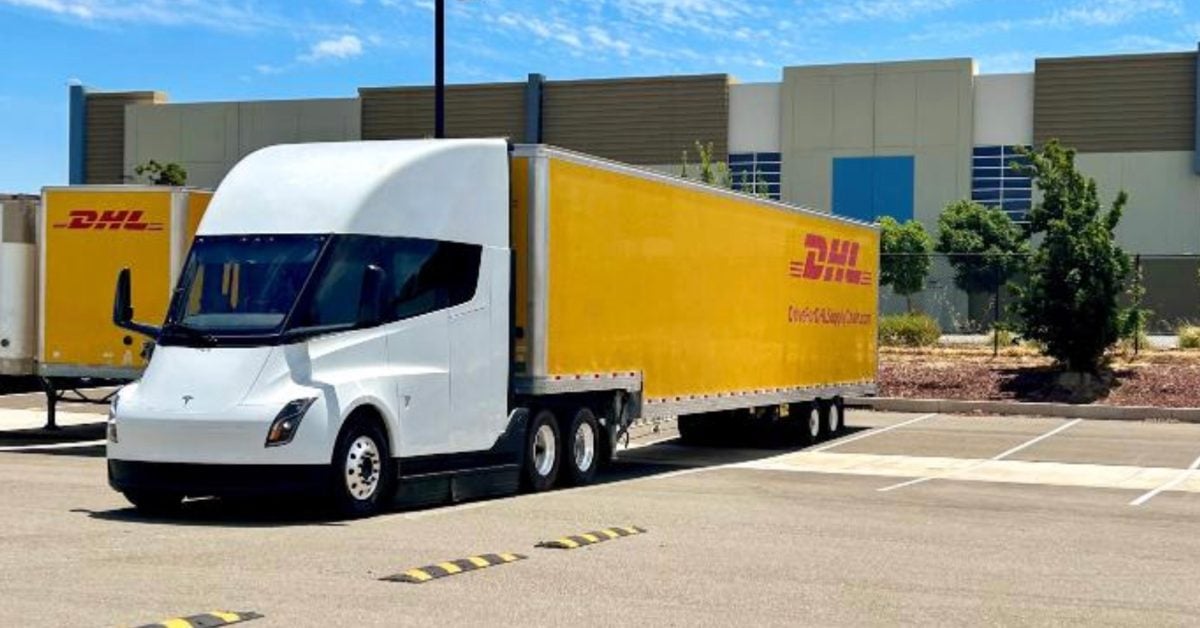DHL says that it was able to confirm that the Tesla Semi is capable of 500 miles on a single charge with a full load.
But more importantly, DHL confirmed that it achieved an efficiency of 1.72 kWh/mile on average during its two-week trial:
During the trial, the trial vehicle averaged 1.72 kWh/mile operating at speeds exceeding 50 mph (80 km/h) on average for over half its time on the road. The result exceeded our expectations and even Tesla’s own rating. That’s exactly what Tesla has been predicting, and in fact, Tesla says that it now does a little better with 1.6 kWh per mile.
kWh per mile means that this is the amount of energy it needs to travel a mile. Considering that 1.7 kWh of electricity can cost as low as $0.15, it opens up the opportunity to greatly reduced the cost of operation of semi trucks.



deleted by creator
You don’t see any reason Tesla would fudge their numbers and drive the Semi slowly? I can think of several reasons.
Well you can look at the Run on Less campaign, and then start googling for other tests.
Yes, but it’s NOT how Tesla claims their 500 mile range. Also, every time a Tesla Semi has attempted the longest range driving, the packs have died. Not just run out of charge, but been physically damaged from draining them so low. You don’t have to explain how an EV is operated in real life, I’ve daily driven one for many years now.
Well, a Pepsi employee. Obviously Pepsi can’t say that in the media because Tesla will take away their vehicles which means Pepsi won’t qualify for enough tax credits.
deleted by creator
When you look at the Drive on Less data, it isn’t.
Um, what are you talking about? Literally the entire campaign is about collecting fleet data over an 18 day period.
Ok, so then if I can find a 500 mile down hill stretch and I take the battery out completely, I have a 500 mile range. That’s what you just said, and I think you know that’s nonsense.
See the links I already posted.
Ok. That doesn’t really impact me. You can believe the company that his lied constantly about capabilities if you want, that’s fine. Not being skeptical at all of their claims makes complete sense given their track record at this point.
deleted by creator
Like I said, it doesn’t really impact me. So, you can feel how you want to feel. I don’t believe anything Tesla says because I’ve owned one, and I know how they attempt to manipulate their news cycle. I also downloaded the raw data and ran the numbers myself. The Semi does not achieve 500 mile range with a full gross weight traveling at normal highway speeds. You can calculate the rate of SOC decline between data points where the average speed was > 50 MPH and it comes nowhere close.
Now, if on the other hand the title said DHL was happy with their Semi test bed then that wouldn’t really be up for dispute. But the instant the title said it achieves 500 miles then I’m sorry but there’s no data to support that claim that has ever been published. And I promise you, if such data did exist Tesla would be the first to brag about it incessantly.
deleted by creator
I figured we were having a discussion. Calling it disinformation is hilarious though.
deleted by creator